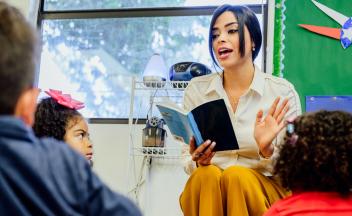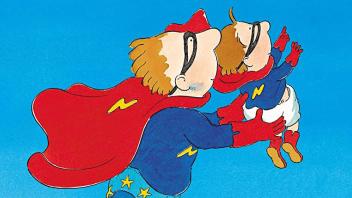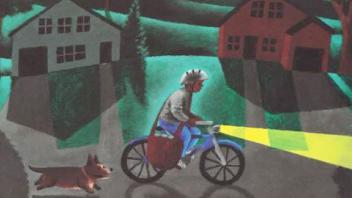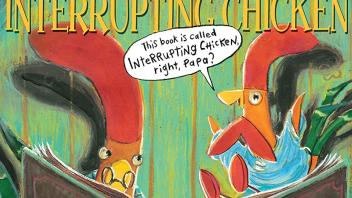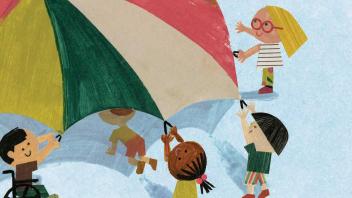On this page:
Discussions around shared reading
Read alouds and literature studies offer lots of opportunities for social-emotional learning and growth. When you engage children in discussions and writing around shared books, you are encouraging your students to use their SEL skills in many ways. Here are some examples of topics to explore during or after reading:
Character analysis
Ask your students to think about the characters in a story and their motivations, feelings, and actions. This can help kids to develop empathy and understanding for others.
Perspective-taking
Have your students put themselves in the shoes of another character and imagine how they might feel or think in a given situation. This can help kids to develop a better understanding of different perspectives and to be more tolerant of others. This article documents an intervention in a diverse third grade classroom which centers on teaching story comprehension through character perspective-taking: Beyond the Story Map.
Decision-making
Ask your students to think about how the characters in a story wrestled with making decisions. That can lead to discussions with kids about learning to make good choices.
Moral reasoning
Initiate a conversation about the “right vs. wrong” implications of the choices that the characters have made. This can help students to develop their own moral compass and to learn how to make ethical decisions.
Identifying emotions
Help your students learn how to recognize and understand the emotions of characters in through the dialogue and narrative language. In a picture book, the images can offer clues — look closely at the characters’ facial expressions and body language. Studying the characters’ relationships and moods can help kids develop emotional intelligence and understand how their own emotions affect their interactions with others.
Making connections
Encourage students to connect the text to their own experiences, knowledge, and values. Students can do this by thinking about how the text reminds them of something that has happened to them, something they have heard or read, or something they believe in. This strategy can help students develop self-awareness and understanding of others.
Problem-solving
During reading you can ask your students to identify problems or obstacles that the characters are facing. Ask kids: what is the character’s goal? What possible solutions are there? This strategy can help students develop critical thinking skills and learn how to solve problems in their own lives.
Renée Watson: Stories bring us together
Transcript
So it can be so cliche to say things like stories matter, stories bring us together. The human experience is what ignites us and unites us, but it’s really true that stories matter and that they do bring us together. And I have been blown away and sweetly surprised by the amount of young people who reach out to me or who in the signing line or at an author visit say things to me about relating to my characters when they are opposite of the main character. I’m mostly right about dark skin, Black girls as my main characters. And I have had so many people of all walks of life come to me and say that they identify and relate to those characters.
And one that stands out to me and that I remember so deeply is a young boy in New Zealand who’s white stood up and he’s in the seventh grade and he is standing in front of there were about 800 young people in this auditorium. So he’s being very brave to ask this question and to say this in front of his peers. He says to me, I just finished reading, Watch Us Rise. And I love that that book is about girls standing up for theirselves and finding their voice. I have a sister and my best friend is a girl, and I want to know if you can give me advice on how to be a better feminist. And I was like, what? You were in the seventh grade and you’re asking, how can you be a better feminist? So of course, I told him, the fact that you’re asking that question means you are absolutely on the right track that you’re aware, that you want to know that you’re thinking about these things. I was so moved by him. I’ve been moved by the quiet student who oftentimes identifies with a side character or with a character who is the unlikely hero or the person who gets the crush or becomes popular.
And a lot of my books poets are popular, and it’s not about the sports and the basketball stars. So I’ll get a lot of young people who come up to me and whisper that they appreciate that the artist is the one who’s the cool kid, and that they identify a lot with those characters. And it always makes me feel good because I think sometimes when I’m writing, there’s the pressure of, well, this is ya, so you’re supposed to include a dating relationship and this and that, and friendship, drama and all the things. And sometimes I lean into that. But other times with piecing me together, I chose not to give Jade a romantic interest. And I felt like that might be a risk. I wasn’t sure how teenagers were going to respond to that. And overwhelmingly, they appreciate that Jade could just focus on herself and loving herself and loving her friends, and that it wasn’t about the romantic love. And so I love that kind of push and pull of what are the tropes of YA? What are we supposed to do? What makes a story YA? And then how can I mess with that a little bit and offer something else for young people who are reading?
SEL booklists
Themed Booklist
Building Confidence and Following My Dreams
Themed Booklist
Friendships and Family: Building Strong Relationships
Themed Booklist
Learning to Make Responsible Decisions
Themed Booklist
Life’s Ups and Downs: Emotions and Accomplishments
Themed Booklist
We Are a Community: Building Empathy and Understanding
Book Finder
Find additional titles in our Book Finder library — browse by theme, genre, diversity, and more!
